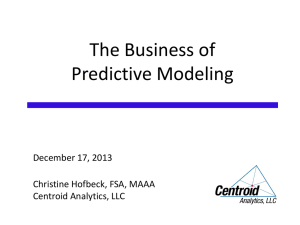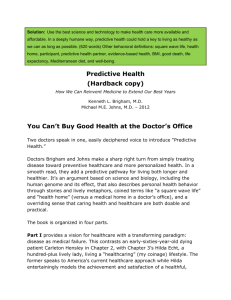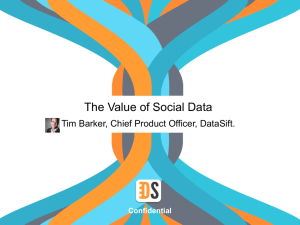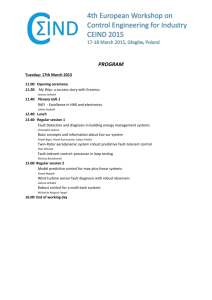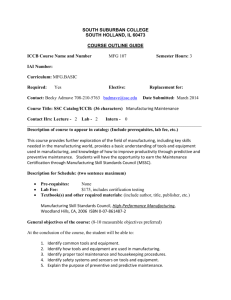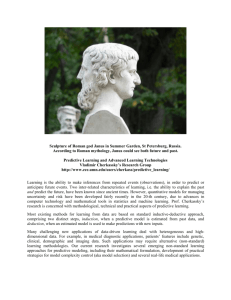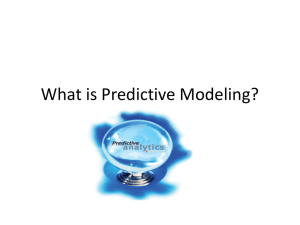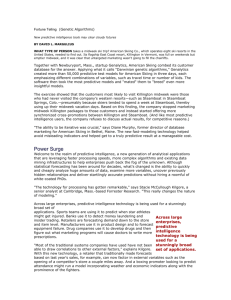“Crowdsourcing Predictors of Behavioral Outcomes”, IEEE
advertisement
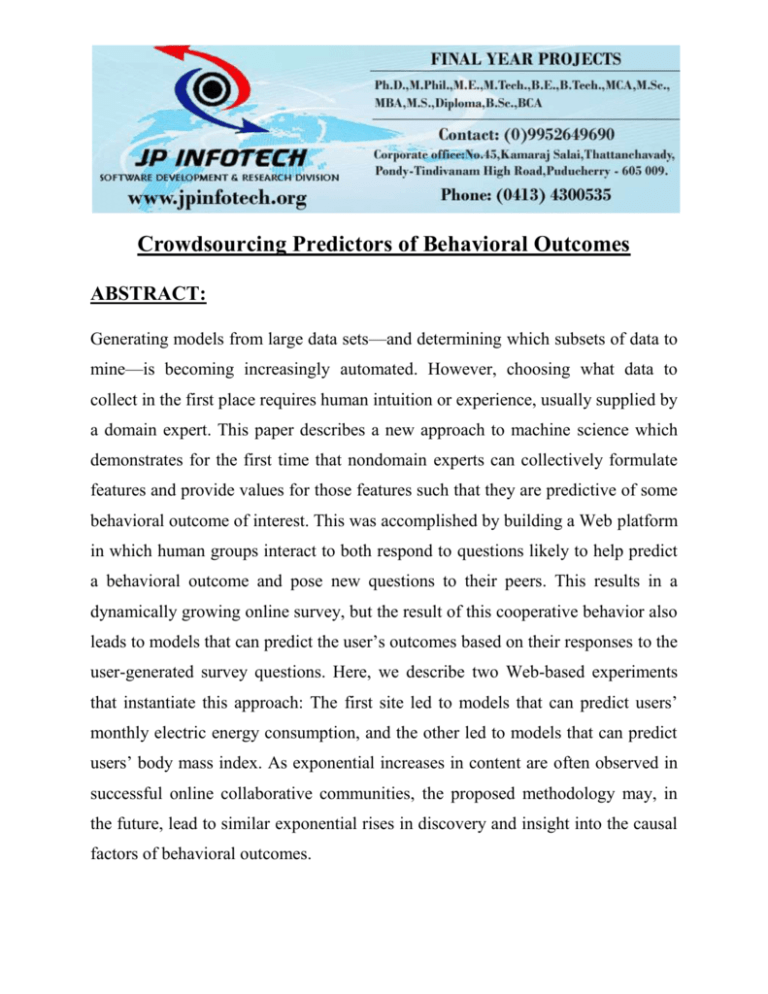
Crowdsourcing Predictors of Behavioral Outcomes ABSTRACT: Generating models from large data sets—and determining which subsets of data to mine—is becoming increasingly automated. However, choosing what data to collect in the first place requires human intuition or experience, usually supplied by a domain expert. This paper describes a new approach to machine science which demonstrates for the first time that nondomain experts can collectively formulate features and provide values for those features such that they are predictive of some behavioral outcome of interest. This was accomplished by building a Web platform in which human groups interact to both respond to questions likely to help predict a behavioral outcome and pose new questions to their peers. This results in a dynamically growing online survey, but the result of this cooperative behavior also leads to models that can predict the user’s outcomes based on their responses to the user-generated survey questions. Here, we describe two Web-based experiments that instantiate this approach: The first site led to models that can predict users’ monthly electric energy consumption, and the other led to models that can predict users’ body mass index. As exponential increases in content are often observed in successful online collaborative communities, the proposed methodology may, in the future, lead to similar exponential rises in discovery and insight into the causal factors of behavioral outcomes. EXISTING SYSTEM: Statistical tools such as multiple regression or neural networks provide mature methods for computing model parameters when the set of predictive covariates and the model structure are prespecified. Furthermore, recent research is providing new tools for inferring the structural form of nonlinear predictive models, given good input and output data. DISADVANTAGES OF EXISTING SYSTEM: THERE ARE many problems in which one seeks to develop predictive models to map between a set of predictor variables and an outcome. One aspect of the scientific method that has not yet yielded to automation is the selection of variables for which data should be collected to evaluate hypotheses. In the case of a prediction problem, machine science is not yet able to select the independent variables that might predict an outcome of interest, and for which data collection is required PROPOSED SYSTEM: The goal of this research was to test an alternative approach to modeling in which the wisdom of crowds is harnessed to both propose which potentially predictive variables to study by asking questions and to provide the data by responding to those questions. The result is a crowd sourced predictive model. This paper introduces, for the first time, a method by which non-domain experts can be motivated to formulate independent variables as well as populate enough of these variables for successful modeling. In short, this is accomplished as follows. Users arrive at a Web site in which a behavioral outcome [such as household electricity usage or body mass index (BMI)] is to be modeled. Users provide their own outcome (such as their own BMI) and then answer questions that may be predictive of that outcome (such as “how often per week do you exercise”). Periodically, models are constructed against the growing data set that predict each user’s behavioral outcome. Users may also pose their own questions that, when answered by other users, become new independent variables in the modeling process. In essence, the task of discovering and populating predictive independent variables is outsourced to the user community. ADVANTAGES OF PROPOSED SYSTEM: Participants successfully uncovered at least one statistically significant predictor of the outcome variable. For the BMI outcome, the participants successfully formulated many of the correlates known to predict BMI and provided sufficiently honest values for those correlates to become predictive during the experiment. While, our instantiations focus on energy and BMI, the proposed method is general and might, as the method improves, be useful to answer many difficult questions regarding why some outcomes are different than others. SYSTEM ARCHITECTURE: SYSTEM CONFIGURATION:HARDWARE CONFIGURATION: Processor Speed - Pentium –IV 1.1 Ghz RAM - 256 MB(min) Hard Disk - 20 GB Key Board - Standard Windows Keyboard Mouse - Two or Three Button Mouse Monitor - SVGA SOFTWARE CONFIGURATION:- Operating System : Windows XP Programming Language : JAVA/J2EE. Java Version : JDK 1.6 & above. Database : MYSQL REFERENCE: Josh C. Bongard, Member, IEEE, Paul D. H. Hines, Member, IEEE, Dylan Conger, Peter Hurd, and Zhenyu Lu, “Crowdsourcing Predictors of Behavioral Outcomes”, IEEE TRANSACTIONS ON SYSTEMS, MAN, AND CYBERNETICS: SYSTEMS, VOL. 43, NO. 1, JANUARY 2013.



